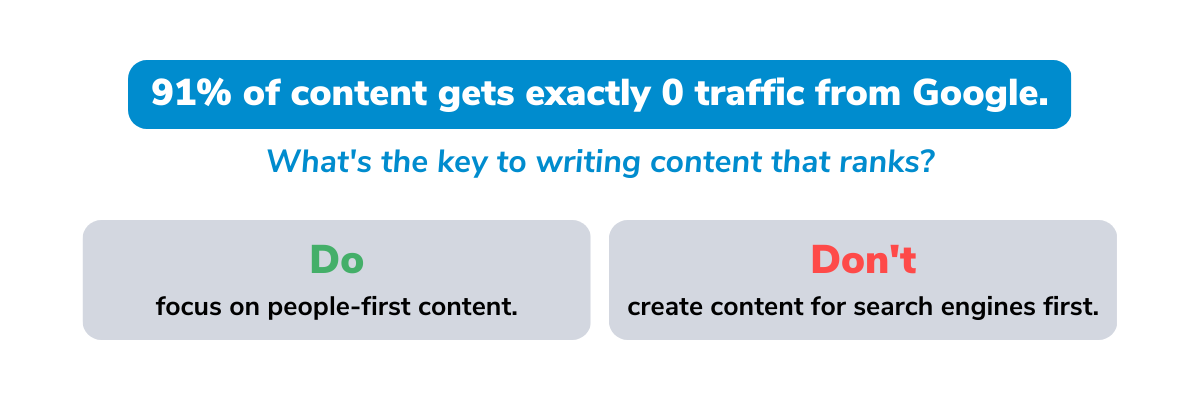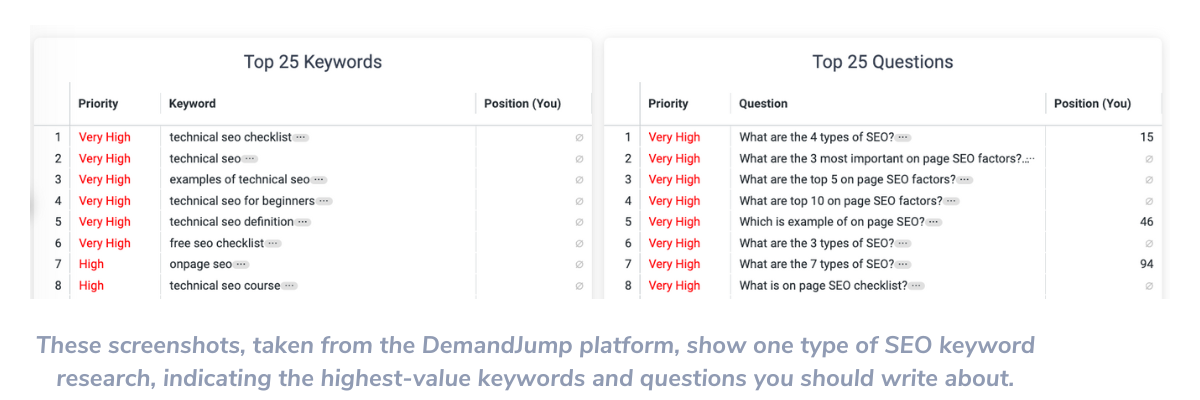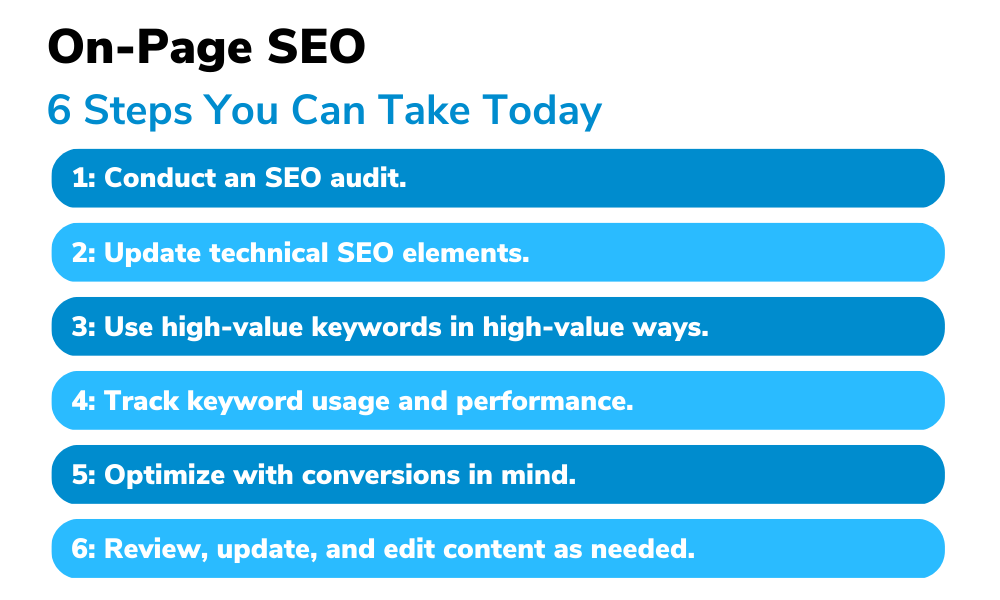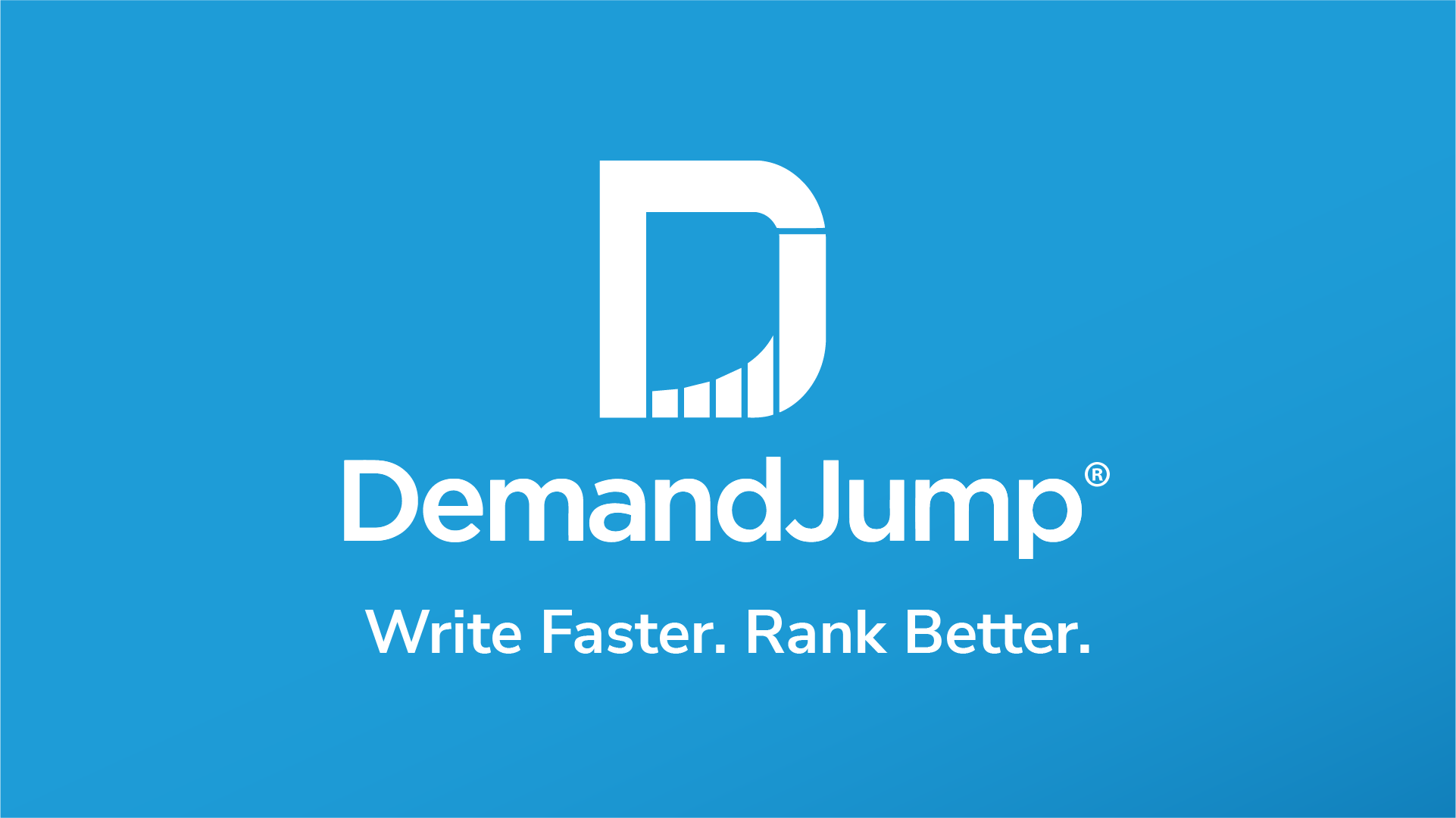There’s so much information on the internet but only so much time to browse it all. As a result, over 90% of the web’s content doesn’t show up very prominently in anyone’s Google searches, which means a staggering amount of content—some good, some bad—goes unseen.
It begs the question: if an informative, trustworthy website never shows up in prospects’ search results, does it still make an impact?
More than mere thought exercise, this is the very-real predicament many marketers face every day. And its answer, of course, is no. The content just sits there—existing, but not working to increase traffic, generate leads, or accomplish any other marketing objective. This underscores the importance of getting search engine optimization (SEO) right.
Where do you start with SEO, though? Is it more about the technical, behind-the-scenes stuff, or is customer-facing website content the priority? How do you develop an SEO framework for consistent results? What are the most important on-page and off-page SEO factors? Maybe you’re just wondering why on-page SEO is important.
Fret not, you’re in the right place for answers—and some tips for effective SEO. Whether you’re most interested in technical, on-page, or off-page SEO, the truth is that effective marketers are comfortable leveraging each of these SEO types. Knowing the advantages of each, they’re able to piece together great strategies, fine-tuning their SEO strategy along the way to strike the right balance.
In this article, we’ll briefly cover the basic types of SEO, and then we’ll settle in for a deeper dive into one specific type of SEO, known as on-page SEO. First, though, let’s define these key terms.
What Are the 3 Types of SEO?
There are 3 basic types of SEO every modern marketer should be aware of:
- Technical SEO, which helps bring traffic to your website.
- On-Page SEO (including high-value website content), which provides quality information to engage prospects.
- Off-Page SEO, which provides a behind-the-scenes foundation for website organization and authority.
Let’s look at each of these a little more closely, starting with technical SEO.
What Is Technical SEO?
The goal of technical SEO is to make it easier for search engines to recognize and understand your brand—and its content. In turn, this makes it easier for prospective customers to discover and connect with your company (instead of a competitor).
Most technical SEO occurs behind the scenes, including website and server optimization strategies that help ensure search engine crawlers can easily and accurately index your site.
Examples of technical SEO tactics include:
- Using Secure Sockets Layer (SSL) technology to ensure site security
- Making sure your website is user-friendly and mobile-responsive
- Taking steps to improve how quickly your pages load
- Creating an effective site map
What Is On-Page SEO?
Unlike technical SEO, which occurs mostly behind the scenes, on-page SEO is forward-facing (hence being on-page SEO). On-page SEO strategies primarily help ensure that your website and content are not just discoverable by search engines as well as prospects, but that they’re understandable and informative, too.
Think of it this way. If technical SEO brings prospects to your company’s door, on-page SEO makes the first impression and, hopefully, provides the information and understanding they were looking for. Otherwise, it can feel like a bait and switch to prospective customers, which quickly erodes trust.
What’s the Relationship Between On-Page SEO and Website Content?
If you’ve read much about SEO or even general marketing to this point, you’ve almost certainly heard the phrase “content is king.” For marketers it’s as true today as it was when Bill Gates first said it over 20 years ago. While it might seem to run counter to what many marketers have been taught over the years, the truth is that the best content provides informative value to readers, not just thinly-veiled sales pitches disguised as blogs.
It’s important to realize that customers—and search engines—are increasingly savvy about what they read online and what sources they choose to trust and/or shun. And most companies will only get one chance to make a first impression. If you successfully attract prospects and get them engaging with your site, they better find some valuable on-page content there! Otherwise, they’ll probably take their search for helpful content elsewhere.
Speaking of helpful content, Google’s recent “Helpful Content” update explicitly prioritizes content and websites that provide authentic, credible information to searchers, underscoring the importance of excellent content. To summarize the key points, Google outlines two interconnected priorities for creating informative, high-performing content:

Almost deceptively simple, this can leave marketers scrambling for answers, unsure where to even start. That’s especially true for those who are less experienced with content marketing. Fortunately, there are innovative tools and strategies available today that didn’t exist even a year or two ago—Pillar-Based Marketing, or PBM, for example.
What’s the Relationship Between On-Page SEO and Pillar-Based Marketing?
PBM is an innovative new strategy that aligns near-perfectly with what Google is looking for when it comes to helpful, effective content. Pillar-Based Marketing is driven by human-centered content, first and foremost. By writing great content and establishing a network of interlinked topics, companies can signal to search engines and humans that they’re a credible source for information.
When companies develop and deploy a PBM strategy driven by high-quality content, they can improve their ranking on search engine results pages (SERPs) and attract equally high-quality prospects. In other words, marketers no longer have to choose between writing for search engines and writing for humans—with PBM, you can do both!
Learn more about how DemandJump, the world’s first and only PBM platform, empowers marketers with content recommendations and strategies for attracting, engaging, and converting prospects.
What Is Off-Page SEO?
Finally, we come to off-page SEO, a sort of catch-all for elements and strategies that work to further boost where your company and content may appear within SERPs. By effectively leveraging off-page SEO techniques, you can improve your company’s visibility and authority.
Off-page SEO includes elements like:
- Strategic backlinking and inter-linking
- Reputation management (like responding to reviews)
- Social media content promotion and engagement
What Is the Importance of On-Page SEO?
On-page SEO is one of the best strategies for attracting, engaging, and converting prospects. When customers are searching for answers online—solutions to some pain point they’re facing—most of their time will ideally be spent on different solution providers’ pages, viewing their content. There’s little room for sub-par, unhelpful, or overly salesy content, as people’s patience for the “gotcha” approach is as thin as ever.
On-page SEO is just as important for search engines as it is for human readers. Google’s increasingly-complex algorithms are designed to understand and evaluate websites’ accuracy, accessibility, and authority. In fact, a majority of the types of signals Google bases their search rankings on align with on-page SEO best practices.
For marketers and companies, many of the most compelling advantages of on-page SEO revolve around how customers and search engines will understand and engage with your content.
From a high level, when they’re well-executed, on-page SEO techniques work to:
- Boost organic website traffic
- Improve your search engine results pages (SERP) rankings, including among local searches
- Increase click-through rate (CTR) and conversion rate
- Make your website and content stand out from the rest
What Are the Top 3 On-Page SEO Factors?
While on-page SEO can seem like a broad topic, as you learn more about what works well, you can begin developing your own repeatable process for on-page optimization. It’s important to know exactly what to look for, though, so here are the most important on-page SEO factors to add to your on-page SEO checklist, divided into three categories:
- Content
- HTML
- Site Architecture
Content
Think of your website like a showroom. Assuming you can attract customers and get them through the door (by using technical SEO in a savvy way), you don’t want them to leave disappointed. The best way to demonstrate your brand’s personality and the unique value you offer is through well-written, informative website content.
If you want your content to really work for you, you’ll need to be laser-focused on creating high-quality website content.
In the context of SEO and marketing, high-quality content is that which is perceived as informative and valuable through search engine algorithms as well as real, human readers (your prospects). First and foremost, it should be informative, authentic, and clear. It should also align with what your prospects are really looking for, and it should use the kinds of words and phrases they’re actually using in their searches.
Unsure what to write about? At DemandJump, we’ve built a platform uniquely designed to empower marketing teams with SEO keyword research and content planning tools that outline the exact type(s) of content they should be publishing and promoting.

HTML
The last thing any marketing team can afford is to invest their time and energy into producing great content, only for it to languish too deep in the SERPs for most prospects to ever see it. As we mentioned previously, that’s precisely the fate of a vast majority of the world’s content. After all, cracking Page One can be maddening, especially for SEO novices (but DemandJump can help).
To optimize your website’s source code, what elements should you focus on? Let’s look at a few of the most important.

Page Titles
The importance of well-titled pages shouldn’t be a surprise. Even though it’s not that different from judging a book by its cover, the reality is that when people are searching for information online, they’re not expecting it to be a trial-and-error experience. Simply put, pages with clear, concise, and relevant titles are going to rank better with search engines and provide a better experience for prospects in search of answers.
In-Text Headers
Similar to page titles, well-chosen in-text headers (h2s and h3s, for example) help search engines and readers to better understand how the content is organized. Using specific, catchy headers helps search engines and human readers to better understand and appreciate what they’re reading, and it’s even better if you can work high-value on-page SEO keywords into them.
Meta Descriptions
Meta descriptions, the brief website or article summaries you see within SERPs, help prospects decide whether or not to click on a link and visit a particular website. These should be as specific as possible and use language that will be easily understood by a wide range of searchers. Not only do meta descriptions help prospective customers to save time and find their answers more quickly, they also offer an opportunity to differentiate your content from what your competitors are producing. Aim for 150-160 words.
Alt Text for Images
Including well-selected images in your content helps to make your content and website really stand out. While it won’t show up on-screen, using a high-value SEO keyword or phrase in your image alt text gives search engines yet another clue that your website is relevant, credible, and worth ranking highly.
Site Architecture
As you publish content to your website, you can help to enhance their visibility within search rankings by optimizing your site architecture in a way that Google’s crawlers will be able to easily understand. From Google’s perspective, how well your site is organized and linked together is indicative of site authority. Generally speaking, sites with more authority get more traffic. Next, we’ll explore a few of the most important site architecture elements.

URLs
Most people instinctively trust straightforward, coherent URLs the most. A well-structured website URL should be concise and contextual, and represent exactly what someone who opens that link should expect to see. When it comes to SEO and URLs, best practices include keeping URLs brief, incorporating an SEO keyword or phrase, and using SSL (URLS should start with https://).
Internal Linking
Internal linking simply refers to linking related content from your website together. It’s much better to have a website with many different, interlinked pages than one giant mass of content housed at a single URL.
Usually, when prospects are searching for content, they’re in skimming mode, just looking for quick, trustworthy answers. While you might be tempted to load each piece of written content with as much information as possible, it’s better to keep individual pieces digestible and brief—and then to link them together contextually. Interlinking your content effectively helps Google to understand the extent to which you’re an authority on the topic.
With DemandJump’s Pillar-Based Marketing (PBM) platform, marketers can know exactly what topics to write about and how to interconnect them into an authority-building content cluster or topic network.
Mobile Responsiveness
As people increasingly use mobile devices for web searches, it’s important not to underestimate the difference mobile responsiveness can make. Not only does Google favor mobile-optimized websites, but prospects will care, too. Several factors impact a page’s mobile responsiveness, from the website hosting service to things like site design and content layout.
Is your web page mobile-friendly? You can use Google’s free Mobile-Friendly Test to get an idea of where you currently stand.
Site Speed
A glitchy or slow-to-load website provides a poor experience, something humans and search engines both understand to be true. Page speed is important whether it applies to your site’s desktop or mobile experience. You can use Google’s free PageSpeed Insights tool to see how your site performs.
What Are the Most Important On-Page SEO Steps?
Developing an effective strategy and framework for on-page SEO can feel overwhelming. That’s because, for one, you can’t put all of your attention on on-page SEO; instead, you have to balance it well with technical and off-page SEO elements. You also have to establish a middle ground between two key priorities—producing human-centered content and doing well with search engines.
To get you started on your journey, here are a few on-page SEO steps you can take today to lay the groundwork for stronger results tomorrow:
- Conduct an SEO audit. This is all about setting a baseline for improvement. Start by crawling your existing website, taking stock of various pages’ URLs, page titles, and meta descriptions. Once these items have been taken into account, you can turn your focus to organizing and prioritizing your pages and their content. Try to keep website navigation straightforward and intuitive, to signal to search engines (and readers) that you have the information they need, in an accessible format.
- Update technical SEO elements. Based on the ideal site architecture you outline, you can update existing pages’ URLs, page titles, and metadata so they are all consistent and in line with SEO best practices. Even within these elements, try to incorporate your highest-priority keyword(s), but don’t overdo it.
- Use high-value keywords in high-value ways. As you construct informative networks of website content, use your keywords throughout. Whenever possible, use keywords in your content headings, to signal to readers—and search engines—that these keywords aren’t just included, they’re being discussed in a credible way. Use your keywords confidently, but don’t be a keyword-stuffer!
- Track keyword usage and performance. As you create and publish content, it’s smart to keep track of the keywords you’re using, as well as how you’re using them. This helps keep their usage and definitions consistent, and can help marketers to fine-tune their content and campaigns as they see what’s working and what’s not.
- Optimize with conversions in mind. Sometimes, a blog post is just a blog post. For companies that prioritize SEO, though, each piece of content should contain a compelling call-to-action (CTA) to transition the reader from reading and learning to taking concrete action. Over time, you can experiment with different CTAs to see what types resonate most with your customers and align best with your marketing strategy and objectives.
- Review, update, and edit content as needed. Depending on your industry and the topics you address, your website’s content may or may not be evergreen. In other words, what you publish today may not be as accurate or relevant a few months or years in the future. That means it’s important to regularly audit your content and keep it fresh. For example, based on how Google’s algorithms might change between now and this time next year, there’s a good chance that some of the information in the article you’re reading right now will still be relevant and accurate, but some information might benefit from being tailored to whatever updates have happened since its original publication.
Here’s a quick recap of the on-page SEO steps you can get started with:

DemandJump: Modern Solutions for On-Page SEO, Content Creation, and More
DemandJump’s platform was designed to help marketers know exactly what kind of content they should be producing—and how to optimize that content for various SEO-based objectives. From basic SEO keyword research and intuitive content planning tools to comprehensive Pillar-Based Marketing (PBM) strategies and best practices, DemandJump empowers it all!
















